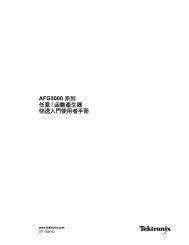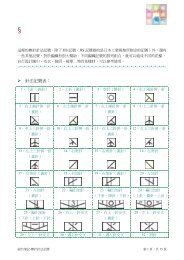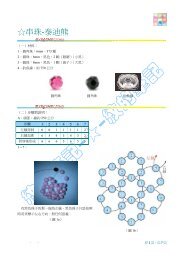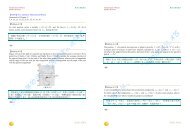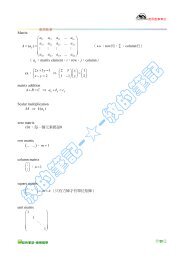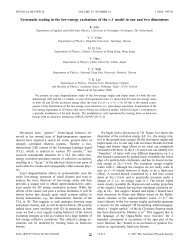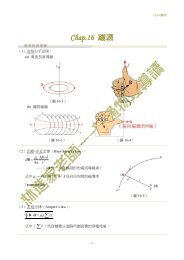Chapter 22 Materials Selection and Design Considerations
Chapter 22 Materials Selection and Design Considerations
Chapter 22 Materials Selection and Design Considerations
Create successful ePaper yourself
Turn your PDF publications into a flip-book with our unique Google optimized e-Paper software.
SUMMARY<br />
Summary • W129<br />
<strong>Materials</strong> <strong>Selection</strong> for a Torsionally Stressed Cylindrical Shaft<br />
In this chapter, we have illustrated the protocol of materials selection using six diverse<br />
examples. For the first case, a torsionally stressed cylindrical shaft, an expression<br />
for strength performance index was derived; then, using the appropriate<br />
materials selection chart, a preliminary c<strong>and</strong>idate search was conducted. From the<br />
results of this search, several c<strong>and</strong>idate engineering materials were ranked on both<br />
strength-per-unit mass <strong>and</strong> cost bases. Other factors that are relevant to the decisionmaking<br />
process were also discussed.<br />
Automobile Valve Spring<br />
A stress analysis was next performed on a helical spring, which was then extended<br />
to an automobile valve spring. It was noted that the possibility of fatigue failure<br />
was crucial to the performance of this spring application. The shear stress amplitude<br />
was computed, the magnitude of which was almost identical to the calculated<br />
fatigue limit for a chrome–vanadium steel that is commonly used for valve<br />
springs. It was noted that the fatigue limit of valve springs is often enhanced<br />
by shot peening. Finally, a procedure was suggested for assessing the economic<br />
feasibility of this spring design incorporating the shot-peened chrome–vanadium<br />
steel.<br />
Failure of an Automobile Rear Axle<br />
The next case study was devoted to a failure analysis, which detailed an investigation<br />
conducted on a failed rear axle of a light pickup truck that had overturned; the<br />
problem was to determine whether the accident resulted from this failure, or vice<br />
versa. Impact <strong>and</strong> tensile specimens were fabricated from outer perimeter <strong>and</strong> interior<br />
regions of the axle, which were subsequently tested. On the basis of scanning<br />
electron <strong>and</strong> metallographic examinations of the actual failed axle surface, as well<br />
as the surfaces of these test specimens, it was concluded that the accident caused<br />
the axle failure.<br />
Artificial Total Hip Replacement<br />
For the fourth case study, the artificial total hip replacement was explored. The hip<br />
anatomy was first presented, which was followed by a discussion of the components<br />
<strong>and</strong> material requirements for the artificial replacement. Implant materials must be<br />
biocompatible with body tissues <strong>and</strong> fluids, must be corrosion resistant, <strong>and</strong> must<br />
also be mechanically compatible with interfacing replacement/body components.<br />
The femoral stem <strong>and</strong> ball are normally made of a cold-worked stainless steel, a<br />
cast Co–Cr–Mo alloy, or a hot-forged titanium alloy. Some recent designs call for a<br />
polycrystalline aluminum oxide or zirconium oxide ball. Ultrahigh molecular weight<br />
polyethylene is commonly used for the acetabular cup, whereas acrylic bone cement<br />
is normally the fixation agent for attachment of the femoral stem (to the femur)<br />
<strong>and</strong> acetabular cup (to the pelvis).<br />
Chemical Protective Clothing<br />
The fifth materials case study was concerned with materials to be used for chemical<br />
protective clothing—specifically, glove materials to protect against exposure to<br />
methylene chloride, a common ingredient in paint removers. Important parameters<br />
relative to the suitability of a chemical protective material are breakthrough time



